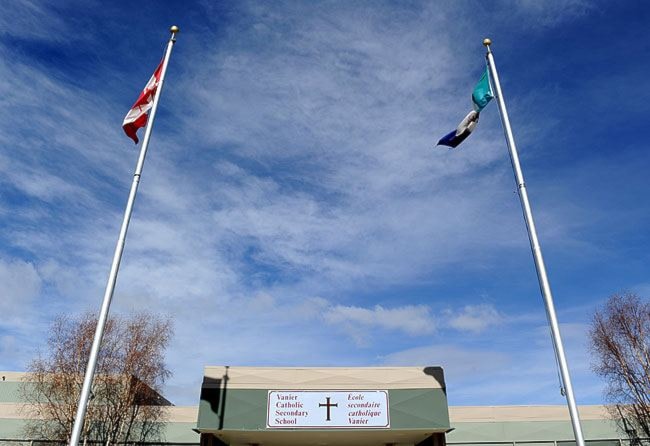We’re afraid that we must give the Yukon Department of Education’s recently released annual report a grade of “I” for incomplete. The assignment will have to be redone.
The revised work will answer the following questions. Are the territory’s graduation rates improving or not? How about attendance rates? Is the performance gap between First Nation and other students growing or shrinking? Are we catching up with or falling behind other Canadian jurisdictions?
We appreciate that this assignment is a group project, and that the, ahem, abrupt departure of several group members earlier this year may have something to do with the ensuing shambles. Still, this is precisely the sort of information the auditor general suggested the department start tracking. And that request was made more than six years ago.
We also appreciate that department officials have been able to answer some of these questions after being pestered by a newspaper reporter. But please remember this is a written assignment. The answers belong in the report.
Doing so would allow the department to highlight some good news: it looks like the overall graduation rate is gradually improving, albeit with the sort of statistical wobble that you would expect to find when dealing with the small population of students that we have. As things stand, the report gives no historic context to the current graduation number.
The department should also clearly flag in the report that the graduation rate it currently highlights may well be inaccurate. It puts the territory’s total graduation rate for 2014 at 68 per cent. For First Nation students, it’s 48 per cent, and for other students it’s 79 per cent.
The trouble with these numbers is that they all ignore students who have dropped out before reaching Grade 12, and in doing so, produce a graduation rate that looks better than it should. That’s similar, although a bit more accurate, than an earlier method that the auditor general condemned as misleading, which simply focussed on Grade 12 who had the potential to graduate.
The report later mentions a graduation rate that is more accurate. It’s calculated by tallying students enrolled in Grade 8, and then looking at how many of them graduated six years later. The additional two years helps catch students who drop out but later graduate within that time.
It looks like the students who drop-out prior to Grade 12 and those who finish school up to two years late come close to balancing each other out: the Yukon average rate by this measure is not far from the territory’s quick-and-dirty method, at 65.5 per cent.
Unfortunately, this number is pretty much bereft of context.
There’s no explanation, for instance, why this rate doesn’t include break-outs for rural or First Nation students. Officials say they need another year of data collected in its upgraded computer systems before it’s able to say. That should be spelled out, lest suspicious minds wonder whether the department is trying to hide embarrassing information about graduation rates, as the auditor general found it to be doing.
What passes for an “analysis” is a two-sentence boilerplate paragraph, which looks copied and pasted from the previous year’s report. And it turned out it wasn’t even correct, until officials revised that passage this week, after we made queries. It claimed the real graduation rate continues to rise, when, in fact, it did drop compared to last year.
To the department’s credit, it has recently launched a number of initiatives in recent years that sound promising. Among other things, Watson Lake is having success with mixing online learning with classroom work, and a new program at Pelly Crossing is boosting literacy levels. But the report gives no sense of their effectiveness. Indeed, it admits measuring such things tends to be a weakness.
And there is no explanation why the department still hasn’t set student achievement targets - another auditor general recommendation that officials tell us are forthcoming. This is important. It’s easy to claim that every year is a success when the goals are hazily defined. It becomes much harder to fudge things when there are concrete targets to be met.
Some individual schools are already doing this. There’s no good reason why the department hasn’t yet done the same.
For instance, the auditor general suggests that Yukon should set our target overall graduation rate at the national average. That was 75 per cent at the time of the recommendation, while we stood then near the bottom of the barrel, ahead of both territories but behind all the provinces. We should also be giving ourselves a deadline to hit that target, and annual updates on how we are doing.
Similarly, a department that claims to consider closing the achievement gap between aboriginal and other students a “top priority” should be setting a measurable goal to that end. Again, there’s no good reason why this hasn’t yet happened.
Political leaders may be reluctant to set a target to tackle this challenge because it involves a tangle of complicated social issues that are bigger than the school system. Of course, this has come back into the public’s focus lately with the recent release of the Truth and Reconciliation Commission of Canada’s massive report.
The territory can already tick one commission recommendation, as it recently introduced school curriculum that teaches students Canada’s shameful history of residential schools.
And we’re confident that, by now, department officials have taken up Premier Darrell Pasloski’s recommendation that everyone read the commission’s report, and that they did not overlook the bit about how genuine reconciliation won’t happen until the education achievement gap closes. Nor would they have missed the part where a deadline for this goal is proposed: within one generation.
We look forward to hearing the department’s response to this, and to seeing the completed 2014 report.
